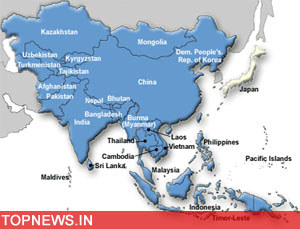After hopeful start, Asia's 2008 tourism prospects sour
 Bangkok - This year started out on an optimistic note for tourism in South-east and East Asia.
Bangkok - This year started out on an optimistic note for tourism in South-east and East Asia.
But after a strong first quarter, arrivals slowed, first on rising oil prices that peaked at 147 dollars a barrel in July, and then the the financial tsunami broke in the US in October and quickly spread to Europe, Japan and South Korea.
"We saw pretty strong performance in the first quarter, growth in the second quarter at a reduced rate and in the third quarter we're starting to see some below-the-line performances," said John Koldowski, head of research at the Bangkok-based Pacific Asia Travel Association. "The trend is very much a downward slide."
No one knows just how deep and how long the slide will go, but the outlook is bleak and distress signals are already coming in.
The Association of Asia-Pacific Airlines recorded 10.98 million passengers in September 2008, a 6.6 per cent drop year-on-year. Freight traffic fared worse, falling 9 per cent despite September being the peak shipping season.
It is difficult to know whether this was in response to high oil prices or the growing economic uncertainty in the US.
Falling tourist arrivals have also been influenced by domestic problems.
Arrivals at Thailand's airports fell 33 per cent in August, 21 per cent in September and 11 per cent in October, amid political chaos in Bangkok, a border confrontation with Cambodia and ongoing violence in the deep South.
"If you want to find excuses, the list is very long," said George Hazard, general manager of the Hard Rock Hotel Pattaya, which has been hit by cancellations in recent months.
China's tourism industry, meanwhile, has suffered an Olympic hangover.
Rather than acting as a catalyst for the industry, visa restrictions for foreigners and controls on the movement of Chinese citizens because of the Games actually limited tourist numbers.
Foreign tourists arrivals to China from January to September were 9.73 million, down 0.4 per cent from last year, and foreign currency earnings totaled 4.4 billion dollars, down 3.3 per cent.
But the Olympics did not stop more than 34 million Chinese people traveling abroad from January to September, up 14.8 per cent from the same period last year.
That helped nearby Hong Kong, a Chinese territory that welcomed a record-breaking 28 million tourists in 2007 and set its sights on
30 million this year.
But by September, visitor numbers from the Americas was down 13 per cent year-on-year, while Europe, Africa and the Middle East were down by 16 per cent. Visitors from China to Hong Kong increased 10 per cent, to account for more than half of all visitors.
"As we face up to what is an economic challenge of a lifetime, competition will be tougher than ever. We will face price wars, a decrease in money in the market and radical changes in people's spending patterns," warned Hong Kong Tourism Board chairman James Tien.
The price wars have already started.
In pricey Singapore, room occupancy slipped to below 80 per cent recently from a high of nearly 90 per cent, and rates have dropped 10 to 15 per cent from the annual average of 150 dollars, said Robert Khoo, chief executive officer of the National Association of Travel Agents Singapore.
In Thailand, where the average hotel occupancy rate was 60 per cent in October compared with 75 per cent a year ago, some hotels have already begun shedding staff through early-retirement plans.
The tourism industry is not only a major employer in South-east and East Asia, it is a vital source of foreign exchange for many countries.
In Malaysia, the government revised an earlier target of 22.5 million tourists in 2008 down to 21.5 million, with the shortfall amounting to a loss of 2 billion ringgit for the economy. Last year, Malaysia earned 13.94 billion dollars off tourism, second only to manufacturing.
Philippines Tourism Secretary Joseph Ace Durano, while expecting up to 7 per cent growth in arrivals this year, has already lowered targets for 2009 and 2010, when the island nation was hoping to hit 5 million.
"In a worst-case scenario, the country can only get 4 million tourists by 2010," he said, adding that the ministry would target tourists from China and India in its new promotion campaigns.
One might add Russia to the list. Russians have been among the fastest growing biggest spenders at popular South-East Asian beach resorts such as Pattaya and Bali.
Pattaya, a Thai resort notorious for its night entertainment, is also seeing a new saviour in India.
"India is the rising star. I see a lot of young Indians in Pattaya riding motorcycles with Thai girls on their backs," said Niti Kongrut, director of the Tourism Authority of Thailand office in Pattaya. "It's cheap to fly here from India and their Lord Krishna isn't here, just girls." (dpa)